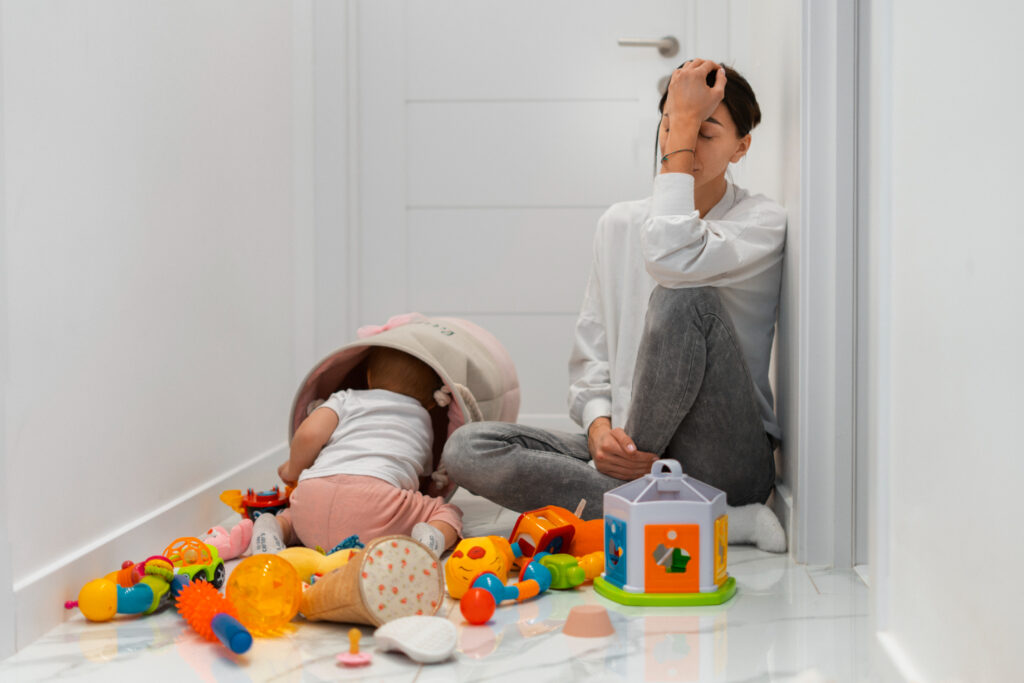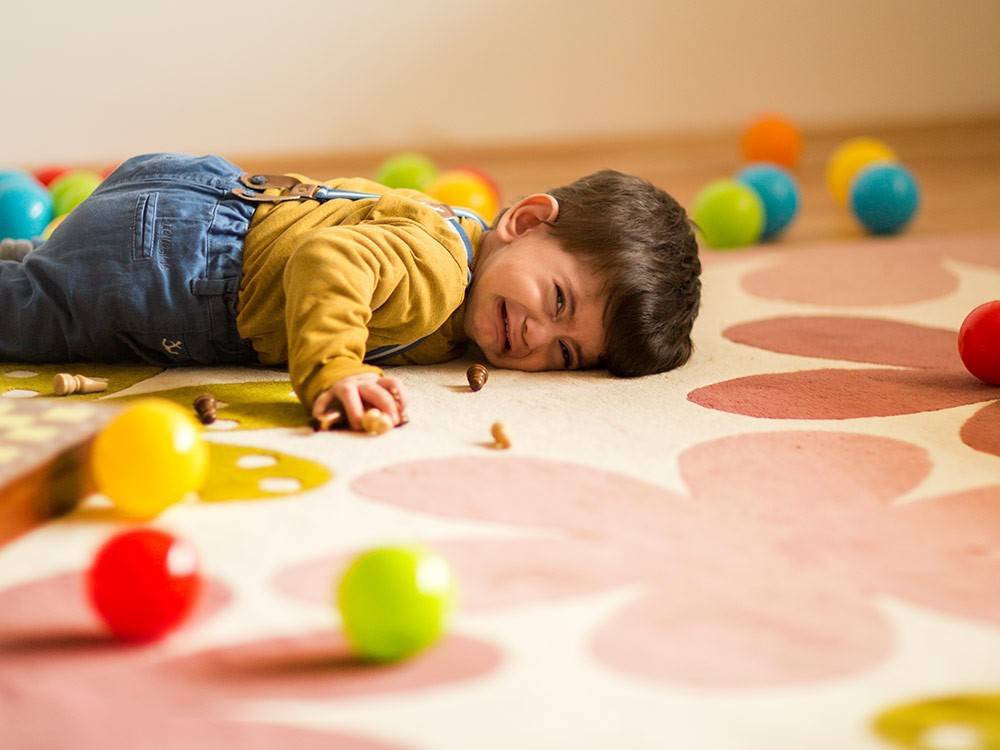The Parenting & Family Blog

How to Handle Toddler Tantrums Like a Pro
Parenting is a winding road peppered with joys, surprises, and hurdles. Among these hurdles, toddler tantrums often reign supreme in every parent’s saga. These emotional outbursts can be tough, even for experienced caregivers. Beneath the surface, there is potential. Understanding the roots can change chaos into teachable moments.
In this treasure trove of wisdom, we’ll crack the code on toddler tantrums. Discover expert insights and practical tips to master toddler discipline. Learn to soothe an upset child with a soothing touch. With our guidance, you can tackle these tricky moments with newfound confidence.
Pro Tip:
Handling toddler tantrums requires patience and a calm approach. Recognise triggers, stay composed, and use positive discipline techniques to turn challenging moments into opportunities for growth.
Quick Guide:
- Understand Triggers – Tantrums often arise from frustration, hunger, fatigue, or overstimulation. Recognising patterns can help prevent outbursts.
- Stay Calm and Composed – Your calmness can soothe your child. Practice deep breathing and take a moment to reflect before reacting.
- Use Positive Discipline – Redirect attention, set clear boundaries, and offer choices to guide your child towards better behaviour.
- Calm an Angry Child – Comfort and reassure them, validate their feelings, and use distraction to shift their focus.
- Consistency is Key – Apply strategies consistently to help your child learn and adapt more effectively.
Important Tip:
Avoid reacting with anger or completely ignoring your child. Consistently modelling calmness and patience helps teach emotional regulation in a supportive way.
Why It Matters
The Importance of Managing Tantrums
Mastering toddler tantrums unlocks doors to deeper connections. First, it fortifies the parent-child bond. By exploring the depths of their emotional storms, parents cultivate a nurturing haven. This paves the way for flourishing emotional growth, ensuring both parent and child thrive together.
Furthermore, mastering the art of tantrum tactics can melt stress away. Armed with essential tools, parents can stay calm and carry on through chaos. This strategy not only calms the storm but also lays the groundwork for enduring behavioural brilliance.
Real-Life Applications
Picture this: a toddler in a supermarket, unleashing a full-blown tantrum. But fear not! A parent armed with clever strategies can pivot this uproar. Instead of an embarrassing meltdown, it becomes a golden teaching moment. By recognising the triggers and using effective discipline tips, managing the chaos is a breeze. In the end, both parent and child can savour a smoother shopping trip.

Step-by-Step Guide to Handling Toddler Tantrums
Step 1: Understanding the Triggers
The journey to tame tantrums begins with pinpointing the pesky triggers. These outbursts often arise from frustration, hunger, fatigue, or emotional bottlenecks. By observing your child’s behaviour, you unveil hidden patterns that reveal their true causes. Each insight is a key, unlocking understanding and paving the path to peace.
Common Triggers to Watch For
- Hunger and Fatigue: Ensure your child is well-fed and rested. A hungry or tired child is more prone to emotional outbursts.
- Overstimulation: Too much noise or activity can overwhelm a toddler, leading to tantrums.
- Frustration: Toddlers often feel frustrated when they can’t express their needs or wants clearly.
Step 2: Staying Calm and Composed
Keeping your cool is essential when a tantrum strikes. Your serenity can wrap around your child like a comforting blanket. This calmness can help tranquillise the storm, easing the chaos. With gentle guidance, you can transform tension into understanding and restore harmony.
Techniques to Stay Calm
- Deep Breathing: Take deep breaths to maintain your focus and prevent your emotions from escalating.
- Pause and Reflect: Before reacting, take a moment to assess the situation and decide on the best course of action.
Step 3: Implementing Effective Toddler Discipline Tips
Discipline isn’t a club for punishment; it’s a guiding light. Positive techniques illuminate the path to acceptable behaviour and self-regulation for your child. With patience and understanding, you can sow the seeds of self-control and watch them flourish. Each lesson shapes character, nurturing growth like a well-tended garden.
Positive Discipline Techniques
- Redirection: Redirect your child’s attention to a different activity or object to diffuse the tantrum.
- Setting Boundaries: Establish clear and consistent rules. Children thrive on routine and knowing what to expect.
- Offering Choices: Give your child limited choices to empower them and reduce frustration.
Step 4: How to Calm an Angry Child
When a tantrum occurs, the goal is to calm your child and help them regain control of their emotions.
Calming Strategies
- Comfort and Reassure: Hold your child close and speak in a soothing voice to provide comfort.
- Empathise and Validate Feelings: Acknowledge your child’s emotions and let them know it’s okay to feel upset.
- Use Distraction: Divert your child’s attention to a favourite toy or activity to shift their focus.
Additional Expert Tips & Common Mistakes to Avoid
Best Practices Beyond the Basics
- Consistency is Key: Consistently applying the same strategies helps children learn and adapt more effectively.
- Model Appropriate Behaviour: Children learn by observing adults. Demonstrate calmness and patience in your interactions.
Common Mistakes and Misconceptions
- Ignoring the Child: While it’s important not to give in to demands, completely ignoring your child can escalate the situation.
- Reacting with Anger: Responding with anger or frustration can exacerbate the tantrum and damage the parent-child relationship.
Advanced Insights
Understanding Developmental Stages
Understanding that tantrums are a natural stepping stone in childhood eases parental pressure. As toddlers blossom, they grapple with a whirlwind of emotions and social cues. During this pivotal phase, your support and guidance are not just important—they’re essential.
Seeking Professional Guidance
When tantrums spiral into a storm of regularity, it’s time to steer towards support. Consulting a child psychologist or therapist can be a game changer. They hold the key to bespoke strategies and invaluable insights, tackling those tricky behavioural hurdles with finesse.
FAQ
Why do toddlers have tantrums?
Toddlers have tantrums because they are still developing emotional regulation skills. Frustration, hunger, fatigue, and overstimulation are common triggers. Tantrums are a way for toddlers to express emotions they can’t yet verbalise.
How should I respond during a public tantrum?
Stay calm and composed. Remove your child from the triggering environment if possible. Speak softly, validate their feelings, and use distraction techniques to redirect their attention.
Are toddler tantrums a sign of bad parenting?
No, toddler tantrums are a normal part of child development. They are not indicative of poor parenting. Consistent, compassionate responses help children learn emotional regulation over time.
What is the best way to prevent tantrums?
Prevent tantrums by maintaining consistent routines, ensuring your child is well-rested and fed, and offering them choices to reduce frustration. Paying attention to your child’s cues can also help you address their needs before a tantrum occurs.
When should I seek professional help for my child’s tantrums?
If tantrums become frequent, intense, or difficult to manage, it may be helpful to seek guidance from a child psychologist or paediatrician. Professional support can provide tailored strategies to address specific behavioural challenges.

Mastering Toddler Tantrums: Expert Tips for Calm and Effective Parenting
Mastering toddler tantrums is an art that calls for patience and poise. By spotting triggers and staying calm, parents can turn chaos into clarity. Every tantrum is a teachable moment, a chance to guide your child. The aim isn’t to banish tantrums but to build resilience for both of you.
On this parenting odyssey, view each hurdle as a chance for connection. With the right mindset and clever tactics, you can create a nurturing haven. Here, your child will feel valued and understood. So, when tantrums strike, take a deep breath. Apply these insights, and let your confidence radiate like sunshine.









